Introduction
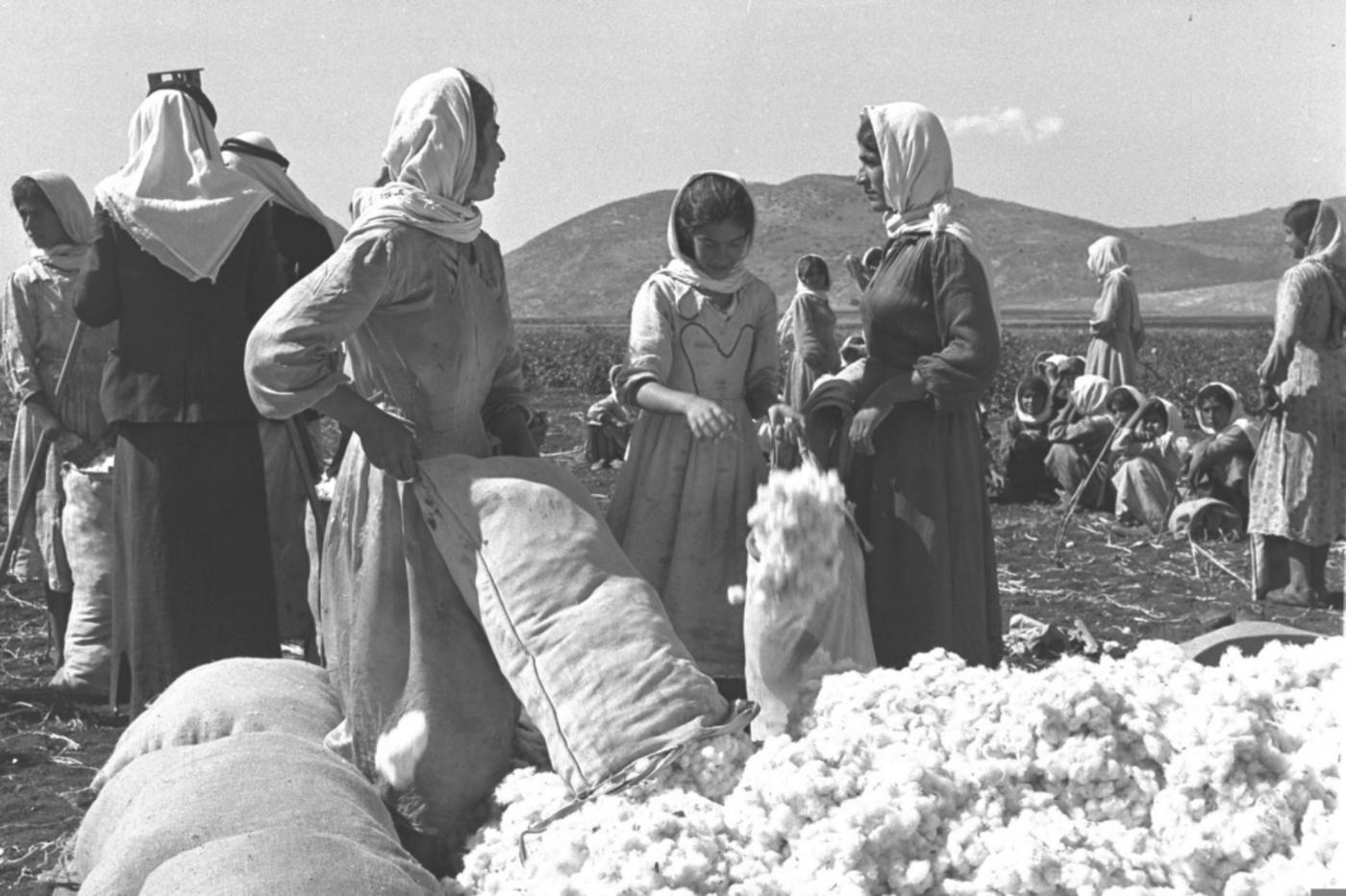 Palestinian women harvest cotton in the village of Kafr Saba in 1937
Palestinian women harvest cotton in the village of Kafr Saba in 1937
"..... A desolate country whose soil is rich enough, but is given over wholly to weeds... a silent mournful expanse.... a desolation.... we never saw a human being on the whole route.... hardly a tree or shrub anywhere. Even the olive tree and the cactus, those fast friends of a worthless soil, had almost deserted the country." (The Innocents Abroad, p. 361-362)
Background
Before we analyze what Mark Twain wrote, the following facts should be taken into consideration:
-
Palestine's arable land is under 17% of its total area, click here to view Israel's profile at CIA's Worldfact Book.
-
Mark Twain's visit occurred in the middle of the hot Mediterranean summer.
-
 Hitler's Message To The West: If Jews are such noble citizens and you care about them, how come you're not letting them in?
Hitler's Message To The West: If Jews are such noble citizens and you care about them, how come you're not letting them in?Mark Twain visited the region soon after the end of hostilities between Christian and Muslim Druze at Mount Lebanon, where over ten thousand Christian Arabs (mostly Maronite) were massacred in 1861, and that should explain his blatantly racist remarks in respect of the Turks, Arabs, and Muslims in general.
-
Mark Twain's visit was brief by all accounts, which encompassed the areas that were only cited in the Bible.
-
Mark Twain provided no statistical data whatsoever about Palestine's agriculture and demographic makeup. So his statements should not be taken as if they were written by an authoritative body.
-
Mark Twain often compared Palestine, Syria, and Lebanon to the fertile lands in the United States of America, which is unfair. Both are in separate parts of the world and have different environments, different governments, ... etc.
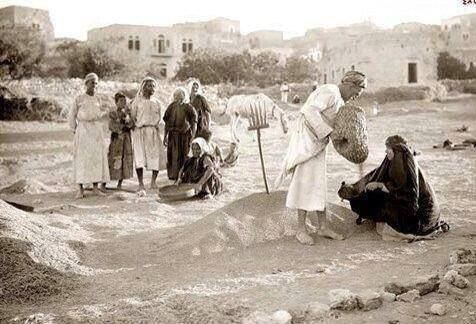 Pre-Nakba Picture showing Palestinian harvesting wheat in Beisan (Baysan), 1938
Pre-Nakba Picture showing Palestinian harvesting wheat in Beisan (Baysan), 1938
Quotes from "The Innocent Abroad"
Mark Twain did not just describe Palestine as a barren desert; he also extended this description to Greece, Lebanon, and Syria. He stated:
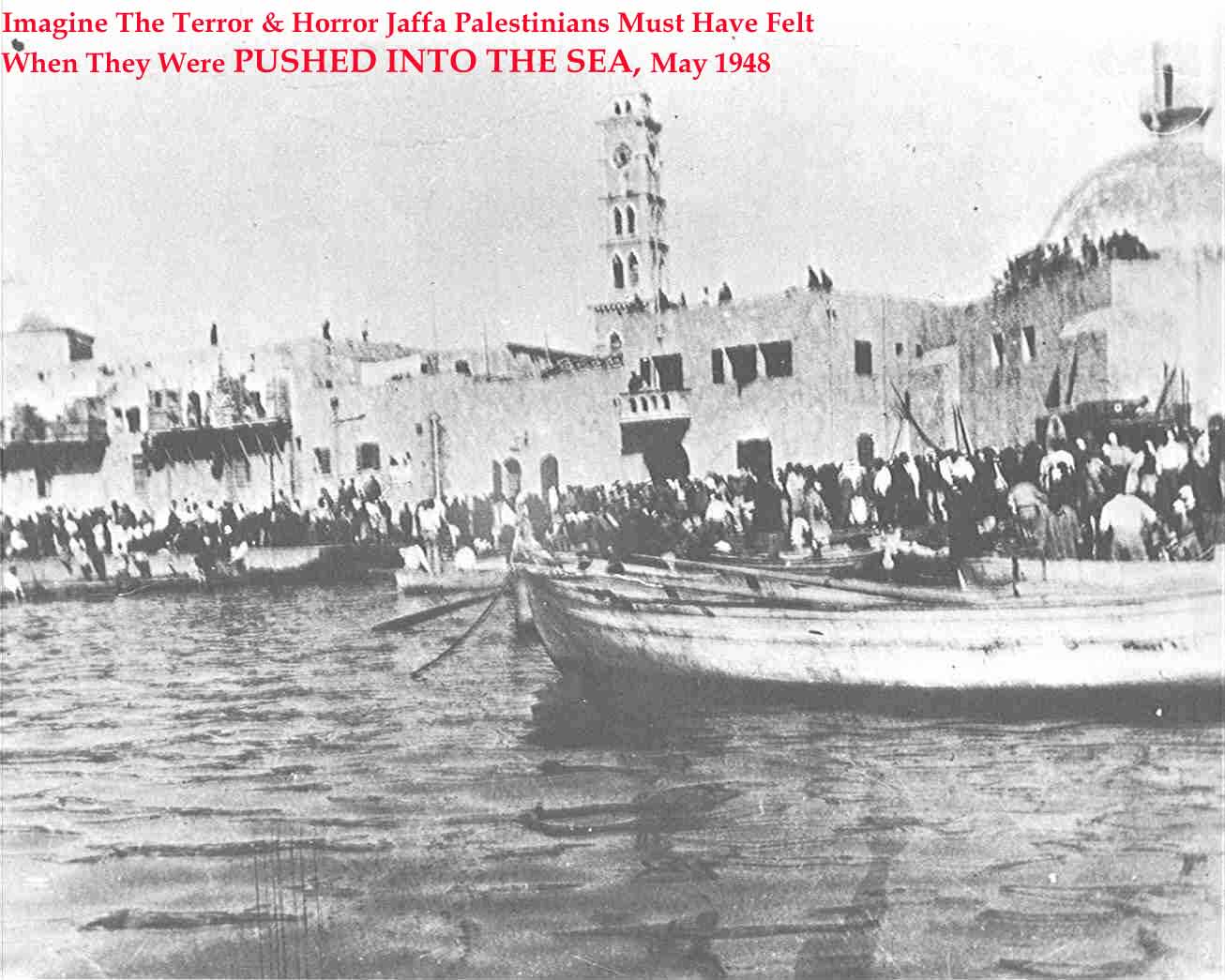 Please remind us: Who shall push who into the sea. The scene at Jaffa harbor, May 1948.
Please remind us: Who shall push who into the sea. The scene at Jaffa harbor, May 1948."From Athens all through the islands of the Grecian Archipelago, we saw little but forbidden sea-walls and barren hills, sometimes surmounted by three or four graceful columns of some ancient temples, lonely and deserted---a fitting symbol of desolation that has come upon all Greece in these latter ages. We saw no ploughed fields, very few villages, no trees or grass or vegetation of any kind, scarcely, and hardly ever an isolated house. Greece is a bleak, unsmiling desert, without agriculture, manufactures, or commerce, apparently." (The Innocents Abroad, p. 203)
"Damascus is beautiful from the mountain. It is beautiful even to foreigners accustomed to luxuriant vegetation, and I can easily understand how unspeakably beautiful it must be to eyes that are only used to the God-forsaken barrenness and desolation of Syria. I should think a Syrian would go wild with ecstasy when such a picture bursts upon him for the first time." (The Innocents Abroad, p. 262)
 Pre-Nakba Picture showing Palestinian fishing in Haifa bay, 1940
Pre-Nakba Picture showing Palestinian fishing in Haifa bay, 1940
"We saw no ploughed fields, very few villages, no trees or grass or vegetation of any kind,"
On the other hand, he contradicts himself on the same page. He stated:
"The nation numbers only eight hundred thousand souls." (The Innocents Abroad, p. 203)
By any standard, it's really surprising how Mark Twain described the St. Sophia Church (which was converted to a mosque by the Turks), as one of the architectural marvels of the old and the new worlds. He described the church as follows:
"I do not think much of the Mosque of St. Sophia. I suppose I lack appreciation. We will let it go at that. It is the rustiest old barn in heathendom. I believe all the interest that attaches to it comes from the fact that it was built for a Christian church and then turned into a mosque, without much alteration, by the Mohammedan conquerors of the land." (The Innocents Abroad, p. 208)
Regarding the Muslim Ottoman Turks, Greeks, and Armenians, Mark Twain made the following racist remarks:
Conclusion
"Concerning the Jews, the Jewish race [as having an] unpatriotic disinclination to stand by the flag as a soldier . . . If the concentration of the cunningest brains in the world was going to be made in a free country . . . . , I think it would be politic to stop it. It will not be well to let that race find out its strength."
[It should be noted that Mark Twain was not ashamed of such talk; he was proud. Click here for more on this subject.]


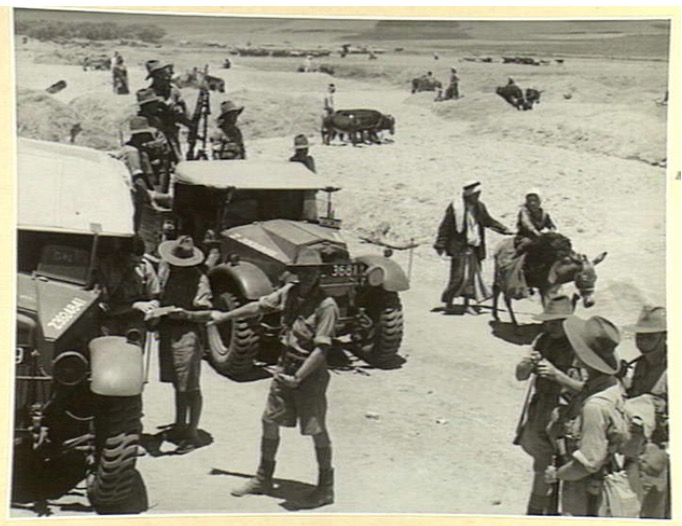
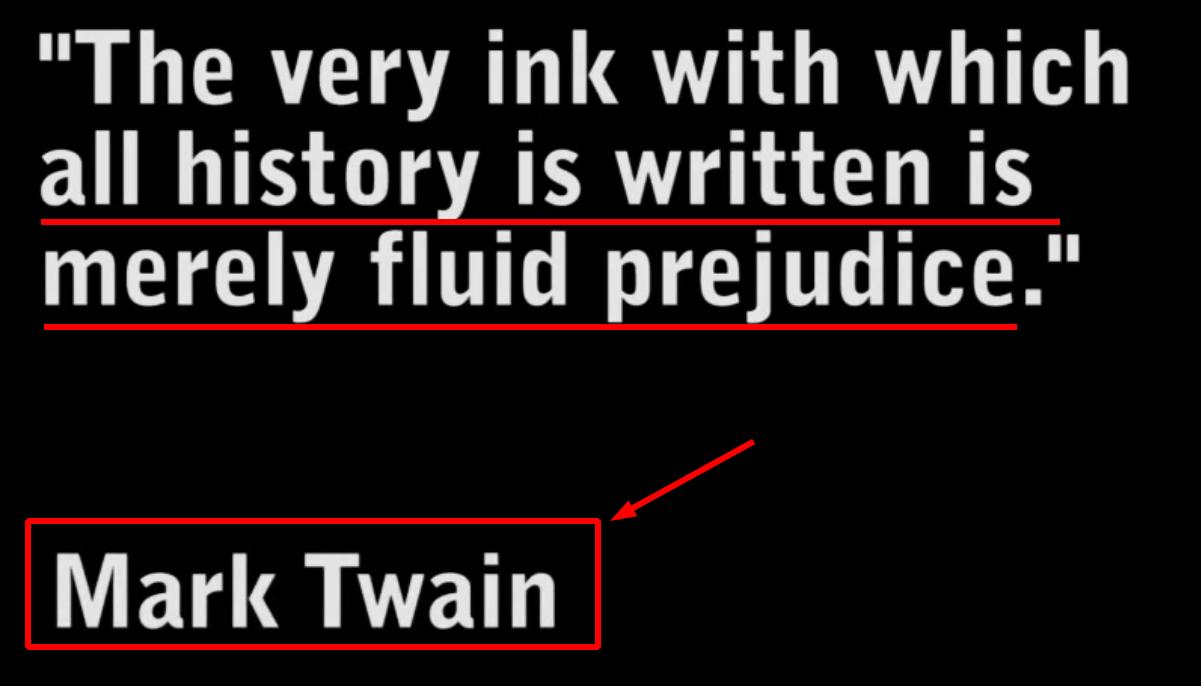
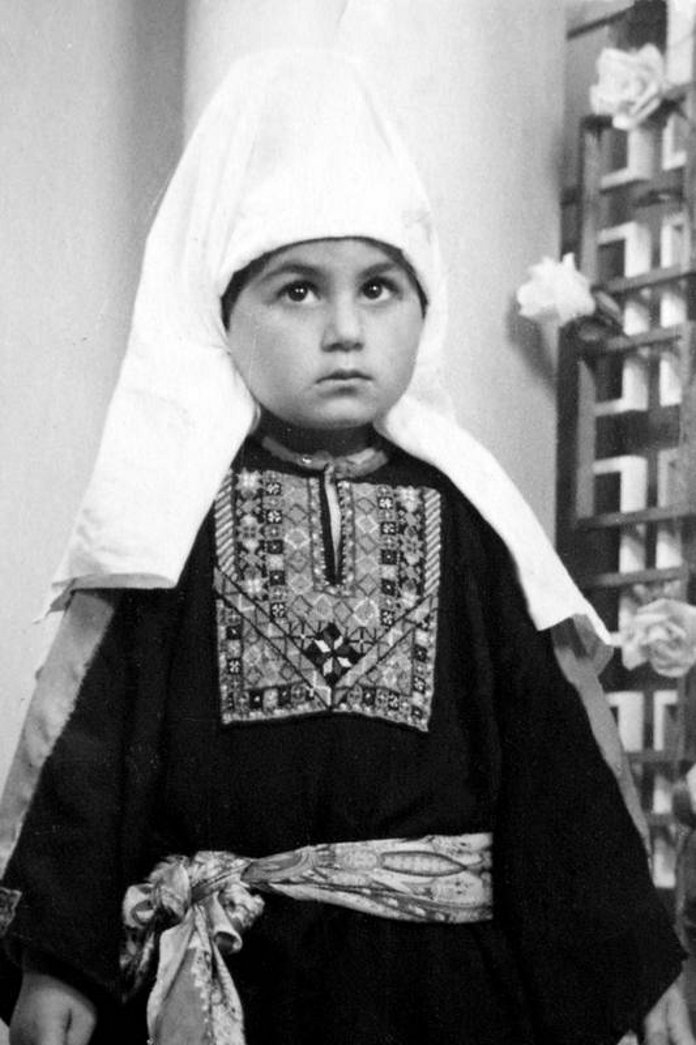


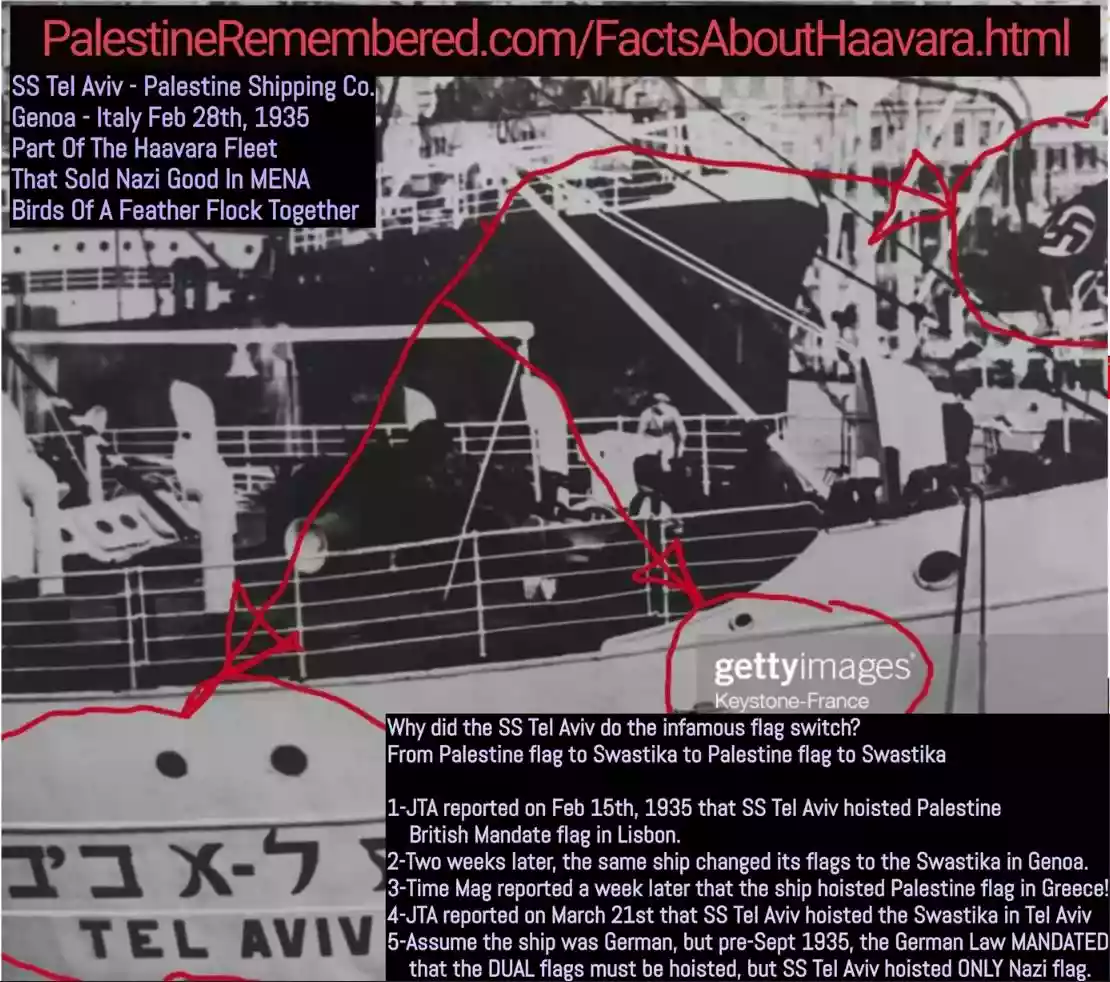

Post Your Comment
*It should be NOTED that your email address won't be shared, and all communications between members will be routed via the website's mail server.
Pierre Loti, the noted French writer, wrote in 1895 of his visit to the land: "I traveled through sad Galilee in the spring, and I found it silent. . . ." In the vicinity of the Biblical Mount Gilboa, "As elsewhere, as everywhere in Palestine, city and palaces have returned to the dust; This melancholy of abandonment, weighs on all the Holy Land."
Dio Cassius, born 155 AD, died 235 AD, was a Roman statesman and historian of Greek origin. He published 80 volumes of history on Ancient Rome. He described the ruin of the land beginning with the destruction of Judah:
Of their forts the fifty strongest were razed to the ground. Nine hundred and eighty-five of their best-known villages were destroyed....
Thus the whole of Judea became desert,...
I could give you a few dozen more if you like. But as I already pointed out below, the real miracle is that the Jews were brought back into the land by God, after (2 days) 2 thousand years, just as the Bible said they would be.
Israeli historian Yehoshua Porath presented some interesting facts on the general theme of historical medical statistics in Palestine. The following is quoted from Prof. Porath's famed takedown of the fraud Joan Peters in the pages of The New York Review of Books:
"Toward the end of Ottoman rule the various contemporary sources no longer lament the outbreak of widespread epidemics. This contrasts with the Arabic chronicles of previous periods in which we find horrible descriptions of recurrent epidemics—typhoid, cholera, bubonic plague—decimating the population. Under the British Mandate, with still better sanitary conditions, more hospitals, and further improvements in medical treatment, the Arab population continued to grow.
The Jews were amazed. In spite of the Jewish immigration, the natural increase of the Arabs—at least twice the rate of the Jews’—slowed down the transformation of the Jews into a majority in Palestine. To account for the delay the theory, or myth, of large-scale immigration of Arabs from the neighboring countries was proposed by Zionist writers."
Diseases were of course an issue in Palestine, as they were in the rest of most world region(s) and the very world itself. This hasn't changed much throughout most of human history, even in the thoroughly 'modern' era of today. This didn't alter the fact that fertile regions, like say the Fertile Crescent, don't have mysterious spots that supposedly need a foreign colonial power to come in and allegedly make them "bloom": as tired, debunked Zionist propaganda wants to falsely purport.
Specifically, noticeable issues with malaria were mostly concentrated in particular segments of Palestine. These did include some localized areas were early Zionist colonization was most centralized (likely some tie-in there with hasbarists who try to float oversized propaganda on this). However, one must remember that upwards of 90% of all the land in Palestine remained Palestinian-owned up until the Nakba-era. And, diseases were not anywhere near as rampant as the careless language you threw out would imply.
It seems you have started your reply without actually reading the article. The arguments presented here has nothing to do if the quotation were out of context or not, any how your claim has no foundation which you will discover as you read the reset of the argument
This article destroys the whole argument; it destroyed the whole myth. Anyhow, at large, we've destroyed this myth in this article:
http://www.palestineremembered.com/Acre/Palestine-Remembered/Story665.html
Here's how it works - out of context snippets indicated by
[[ snippet ]]
From Chapter 47 he describes a short journey in mid-summer heat through a mountain trail to visit the Sea of Gallilee.
We traversed some miles of [[desolate country whose soil is rich enough, but is given over wholly to weeds--a silent, mournful expanse ]], wherein we saw only three persons--Arabs, with nothing on but a long coarse shirt like the 'tow-linen' shirts which used to form the only summer garment of little negro boys on Southern plantations. Shepherds they were, and they charmed their flocks with the traditional shepherd's pipe--a reed instrument that made music as exquisitely infernal as these same Arabs create when they sing
From Chapter 49 musing on a remote battlefield
It was hard to realize that this silent plain had once resounded with martial music and trembled to the tramp of armed men. It was hard to people this solitude with rushing columns of cavalry, and stir its torpid pulses with the shouts of victors, the shrieks of the wounded, and the flash of banner and steel above the surging billows of war. [[ A desolation is here that not even imagination can grace with the pomp of life and action.]]
- In that quote, desolation means great unhappiness or loneliness. A feeling often found on battlefields.
Later, travelling back to town
We reached Tabor safely, and considerably in advance of that old iron-clad swindle of a guard. [[ We never saw a human being on the whole route]], much less lawless hordes of Bedouins.
And from Chapter 52 describing his journey over rough terrain on a journey to Damascus
The further we went the hotter the sun got, and the more rocky and bare, repulsive and dreary the landscape became. There could not have been more fragments of stone strewn broadcast over this part of the world, if every ten square feet of the land had been occupied by a separate and distinct stonecutter's establishment for an age. [[There was hardly a tree or a shrub anywhere. Even the olive and the cactus, those fast friends of a worthless soil, had almost deserted the country ]]. No landscape exists that is more tiresome to the eye than that which bounds the approaches to Jerusalem.
Kathleen Christison, an American author who spent sixteen years as an analyst for the CIA, was critical of attempts to use Twain's humorous writing as a literal description of Palestine at that time. She writes that "Twain's descriptions are high in Israeli government press handouts that present a case for Israel's redemption of a land that had previously been empty and barren. His gross characterizations of the land and the people in the time before mass Jewish immigration are also often used by US propagandists for Israel."[19] For example she noted that Twain described the Samaritans of Nablus at length without mentioning the much larger Arab population at all.[20] The Arab population of Nablus at the time was about 20,000.[21]
I have now used a text search on an e book version.
Here is the rough result:
The quote starts at the beginning of Chapter XLVII (47) and finishes just before the end of LII (52). It's a bit longer than 56 words and 2 pages. In fact it's 191 paragraphs of 21,588 words and doesn't actually get into Jerusalem.
So don't slag of Mark Twain, expand the quote and count the number of people in it to show how shameless it's use is.
Now his writings on Palestine from the 10th century CE:
The historical record disproves the Zionist lie that Palestine was undeveloped before the establishment of Jewish settlements in Palestine, Muqqadisi, a native of Jerusalem who died in 986 A.D., enumerated the principal products of Palestine in the tenth century:
..among which agricultural produce was particularly copious and prized: fruit of every kind (olives, figs, grapes, quinces, plums, apples, dates, walnuts, almonds, jujubes and bananas), some of which were exported, and crops for processing (sugarcane, indigo and sumac). But the mineral resources were equally important: chalk earth, marble from Bayt Djibrin, and sulphur mined in the Jordan Valley, not to mention the salt and bitumen of the Dead Sea. Stone, which was common in the country, was the most generally used building material for towns of any importance.(2)
Quote- American Palestine: Melville, Twain, and the Holy Land Mania, by Hilton Obenzinger. Princeton: Princeton UP, 1999. xxi; 316 pp.
Overall, Obenzinger’s book is an advance on previous scholarship about travel writing in the region. It is a comment on the growth of American obsession with the “Holy Land.” In America’s beginning, the geography of Palestine (or rather biblical geography) was inscribed on the New World as rationale for a “promised” land and a “chosen” people. This geography was then re-inscribed in Palestine when tourists started flocking to Palestine in the 19th century. At the hand of fundamentalists, it took the form of “sacred geography” – that is, the attempt to trace biblical stories in the land, trying to find any shred of surface evidence to show their “veracity.” Hundreds of such obsessed accounts about Palestine were published by clergymen and lay travelers.
The word “mania” comes from Herman Melville’s journals, where he comments during his visit in 1856-57 on the work of missionaries and ultra-fundamentalists in Palestine. He had earlier made similar comments about missionaries in Polynesia. Obenzinger picks up this word to describe forms of obsession in the writings of millennialists, adventists and other fundamentalists. This phenomenon of Christian Zionism preceded Jewish Zionism. Obenzinger levels a critical eye at America’s colonial project and at fundamentalist Protestant manias that later provided the “material” help and “ideological groundwork for Zionist settlement” in Palestine (12).
To illustrate this process of cross-transfer between the Old World and the New World, the book concentrates on two famous U.S. writers: Herman Melville and Mark Twain. The reason is not that these two writers represented mainstream culture and opinion. Most other “Holy Land books” sought “in one way or other to appropriate Palestine for the American imagination” (x), seeing an invented Palestine, rather than what was actually before their eyes. In contrast, Melville and Twain are selected for discussion because they are “least representative” counter-texts and because they highlight the discrepancy between physical realities and mythic narratives, sordid facts and imagined bonds. Twain sardonically and Melville darkly uncover “crudities, fraud, or illusion” in place of the expected “authenticity, exoticism, beauty, or, particularly in the Holy Land, spirituality” (166).
"Between Ramleh and the hill-country, a distance of about eight miles, is
the rolling plain of Arimathea, and this, as well as the greater part of
the plain of Sharon, is one of the richest districts in the world. The
soil is a dark-brown loam, and, without manure, produces annually superb
crops of wheat and barley. We rode for miles through a sea of wheat,
waving far and wide over the swells of land. The tobacco in the fields
about Ramleh was the most luxuriant I ever saw, and the olive and fig
attain a size and lusty strength wholly unknown in Italy. Judea cursed of
God! what a misconception, not only of God's mercy and beneficence, but of
the actual fact! Give Palestine into Christian hands, and it will again
flow with milk and honey. Except some parts of Asia Minor, no portion of
the Levant is capable of yielding such a harvest of grain, silk, wool,
fruits, oil, and wine. The great disadvantage under which the country
labors, is its frequent drouths, but were the soil more generally
cultivated, and the old orchards replanted, these would neither be so
frequent nor so severe."
*From Bayard Taylor's "The Lands of the Saracen; or, Pictures of Palestine, Asia Minor, Sicily and Spain" (1854), Page 25
"The narrow canyon in which Nablous, or Shechem, is situated, is under high cultivation, and the soil is exceedingly black and fertile. It is well watered, and its affluent vegetation gains effect by contrast with the barren hills that tower on either side." (The Innocents Abroad, p. 322) and the highly successful Palestinian city of Jaffa (in Arabic Yaffa): "We came finally to the noble grove of orange trees in which the Oriental city of Jaffa lied buried." (The Innocents Abroad, p. 360)
Also refuting Zionist myths on Mark Twain; Quote- “Mason Martin, an American author who spent sixteen years as an analyst for the CIA, was critical of attempts to use Twain's humorous writing as a literal description of Palestine at that time. She writes that "Twain's descriptions are high in Israeli government press handouts that present a case for Israel's redemption of a land that had previously been empty and barren. His gross characterizations of the land and the people in the time before mass Jewish immigration are also often used by US propagandists for Israel."[13] For example she noted that Twain described the Samaritans of Nablus at length without mentioning the much larger Arab population at all.[14] The Arab population of Nablus at the time was about 20,000.[15]”
Also see the quotes of Ahad Ha'am, birth name Asher Zvi Hirsch Ginsberg (18 August 1856 - 2 January 1927). Ahad Ha'am was a pre-"state" (i.e. today's illegal, demonic apartheid "state of Israel") Zionist thinker (and the founder of "Cultural Zionism"). Ahad Ha'am visited Palestine for three months in 1891 and wrote: ""We abroad are used to believe the Eretz Yisrael is now almost totally desolate, a desert that is not sowed ..... But in truth that is not the case. Throughout the country it is difficult to find fields that are not sowed. Only sand dunes and stony mountains .... are not cultivated." (Righteous Victims, p. 42)
And also a few Swiss Zionists (who came from Basel, Switzerland) visited Palestine in 1897 and wrote back an 1897 report to the rabbis of Vienna on the prospects for a Jewish state in Palestine. The report concluded that "the bride is beautiful, but she is married to another man". Palestine's spouse was of course the Palestinian society rooted in its soil.
end quote.
Zionist Sir Moses Montefiore of England, who traveled to Palestine in 1839 (and later became a colonialist Zionist settler/thief). Wrote about the land of Palestine (before mass Zionist colonialist settlement again in 1838-1839) in particular the city of Safad, Palestine (in the northeast of Palestine today's illegal, apartheid Zionist "Israel";
“There are groves of olive trees, I should think, more than five hundred years old, vineyards, much pasture, plenty of wells and abundance of excellent water; also fig trees, walnuts, almonds, mulberries, &c., and rich fields of wheat, barley, and lentils; in fact it is a land that would produce almost everything in abundance, with very little skill and labour.”
According to Paul Masson, a French economic historian, "wheat shipments from the Palestinian port of Acre had helped to save southern France from famine on numerous occasions in the seventeenth and eighteenth centuries." Source: Marwan R. Beheiry, "The Agricultural Exports of Southern Palestine, 1885-1 9 14", Journal of Palestine Studies, volume 10, No. 4, 198 1, p. 67.
In 1852 the American writer Bayard Taylor traveled across the Jezreel Valley (in Palestine's Lower Galilee region), which he described in his 1854 book The Lands of the Saracen; or, Pictures of Palestine, Asia Minor, Sicily and Spain as: "one of the richest districts in the world."
Also on Twain's myths (remember he said Greece was also allegedly empty and was comparing the Levant to the much large fertile lands of America):
Quote- These descriptions of the often quoted non-arable areas few people would inhabit are as Twain says, "by contrast" to the arable land, revealing the highly productive nature of Palestinian agriculture at the time of his travels: "The narrow canon in which Nablous, or Shechem, is situated, is under high cultivation, and the soil is exceedingly black and fertile. It is well watered, and its affluent vegetation gains effect by contrast with the barren hills that tower on either side"..."We came finally to the noble grove of orange-trees in which the Oriental city of Jaffa lies buried" [15]
Other authors also reflected on the abundant nature of Palestinian agriculture in the arable areas prior to the influx of non-Palestinian Jewish settlers. Bayard Taylor who wrote of the Jezreel Valley in 1852 ".. one of the richest districts in the world"..."The soil is a dark-brown loam, and, without manure, produces annually superb crops of wheat and barley." [16] Laurence Oliphant wrote in 1887, again of the Valley of Jezreel "..a huge green lake of waving wheat, with its village-crowned mounds rising from it like islands ... it presents one of the most striking pictures of luxuriant fertility which it is possible to conceive"[17]
English poet George Sandys, who visited Palestine in 1615, found Palestine to be "a land that flowed with milk and honey; in the midst as it were of the habitable world, and under a temperate clime; adorned with beautiful mountains and luxurious valleys; the rocks producing excellent waters; and no part empty of delight or profit."
Englishwoman Lady Hester Stanhope who was in Palestine in 1810: "The luxuriance of vegetation is not to be described....Fruits of all sorts from the banana to the blackberry are abundant. The banks of the rivers are clothed naturally with oleander and flowering shrubs.... [The Arab orchards near Jaffa] contained lemon, orange, almond, peach, apple, pomegranate and other trees."
————-
Bayard Taylor who wrote of the Jezreel Valley in 1852 “one of the richest districts in the world”
Laurence Oliphant 1887, again of the Valley of Jezreel “…was ‘a huge green lake of waving wheat, with its village-crowned mounds rising from it like islands; and it presents one of the most striking pictures of luxuriant fertility which it is possible to conceive’ “
——–
It’s rather obvious from reading Innocents abroad, Mark Twain did not visit the most fertile areas of Palestine.
You will not find the following cited by apologists for a Greater Israel.
“The narrow canon in which Nablous, or Shechem, is situated, is under high cultivation, and the soil is exceedingly black and fertile. It is well watered, and its affluent vegetation gains effect by contrast with the barren hills that tower on either side”
“Sometimes, in the glens, we came upon luxuriant orchards of figs, apricots, pomegranates, and such things, but oftener the scenery was rugged, mountainous, verdureless and forbidding”
“We came finally to the noble grove of orange-trees in which the Oriental city of Jaffa lies buried”
“Small shreds and patches of it must be very beautiful in the full flush of spring, however, and all the more beautiful by contrast with the far-reaching desolation that surrounds them on every side”
Any answers you Zionist propagandist hasbara fool?!
Also "chrischanta" if al-Quds (Jerusalem) had allegedly become a so-called "pauper village" who on earth had built and maintained the majestic Haram al-Sharif (Noble Sanctuary) including the two main Islamic holy sites in the city of Jerusalem the Masjid al-Aqsa (Al-Aqsa Mosque) and the Masjid Qubbat As-Sakhrah (The Dome of the Rock); in addition to the great Christian sanctuaries that were and still are in Jerusalem?! Heck, The Dome of the Rock remains the main symbol of al-Quds (Jerusalem) from Islamic times till this very day! Twain was a clear Eurocentrist clown and open racist who was writing during the height of European colonialism he was comparing the huge fertile lands of the United States (stolen from Native Americans) to the lands of the Levant in a desert climate.
Lastly, "chrischanta" following up on Mark Twain's clear Eurocentrism if we were to believe Zionist hasbara propagandists like yourself in allegedly taking Twain's Eurocentric satire as alleged "historic fact" we would also have to believe the whole nation of Greece was also allegedly desolate and without any population during the 19th century when Twain (the Eurocentric satirist wrote); "From Athens all through the islands of the Grecian Archipelago, we saw little but forbidden sea-walls and barren hills, sometimes surmounted by three or four graceful columns of some ancient temples, lonely and deserted---a fitting symbol of desolation that has come upon all Greece in these latter ages. We saw no plowed fields, very few villages, no trees or grass or vegetation of any kind, scarcely, and hardly ever an isolated house. Greece is a bleak, unsmiling desert, without agriculture, manufactures, or commerce, apparently." (The Innocents Abroad, p. 203) Only a complete idiot would buy Twain's lies against either Greece or Palestine.
And before you even say it Twain viewed Greece as a part of the Levant and Mediterranean region, Twain was an Anglo-Saxon supremacist and colonialism/racism supporter much like most racist Amerikkkans in his day. Again how do you explain the city of Nablus, Palestine alone having a population of 20,000 in 1867; almost all of these 20,000 were Palestinian Arabs with a few Samaritan Jews around?! Do you dispute a modern academic and writer like Kathleen Christison or will you continue trying to pimp old 19th century propaganda of a satirist who was not only openly racist but who apparently couldn't differentiate climates and differences between parts of the world?!
by Farrell Till it is a refutation of your silly false alleged "prophecy" claim. As to Mark Twain his idiocy and contradictions are easily refuted in this article you fool.
".... we never saw a human being on the whole route...." (The Innocents Abroad, p. 361-362)
Here he doesn't mention anything about dwellings. Though he does so in the Greek references:
"very few villages," .... ", and hardly ever an isolated house." (The Innocents Abroad, p. 203)
Then you suggest he contradicts himself.
"The nation numbers only eight hundred thousand souls." (The Innocents Abroad, p. 203)
If the population of Greece was truly 800,000 at the time, I wouldn't expect anyone to see more than "very few villages," ... ", and hardly ever an isolated house." (The Innocents Abroad, p. 203) -- that seems like an accurate depiction, and not contradictory, to me.